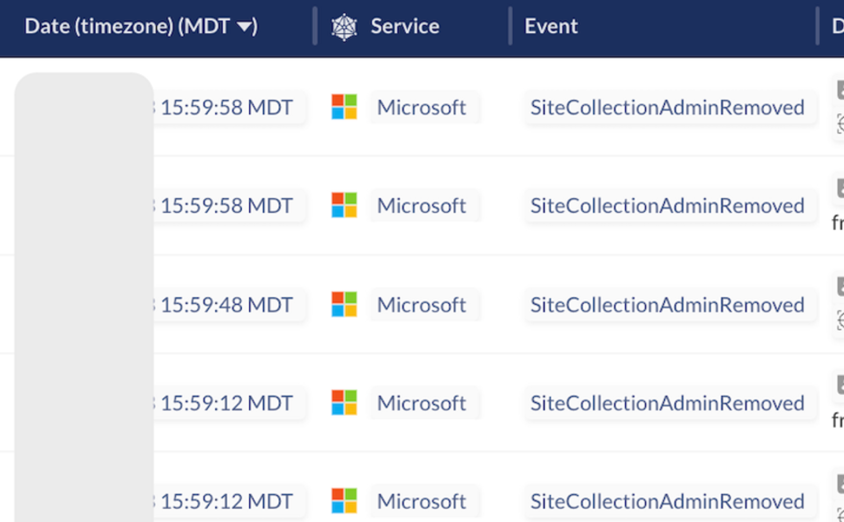Source: www.securityweek.com – Author: Kevin Townsend
Cybersecurity firm Obsidian has observed a successful ransomware attack against Sharepoint Online (Microsoft 365) via a Microsoft Global SaaS admin account rather than the more usual route of a compromised endpoint.
The attack was analyzed post-compromise when the victim employed the Obsidian product and research team to determine the finer points of the attack. In its blog account of the incident, Obsidian did not disclose the victim, but believes the attacker was the group known as 0mega.
Once in, the attacker created a new Active Directory (AD) user called Omega with elevated privileges, including Global Administrator, SharePoint Administrator, Exchange Administrator, and Teams Administrator; and site collection administrator capabilities to multiple Sharepoint sites and collections. The attacker also removed existing administrators (more than 200) in a 2-hour period.

The attack involved only the theft of files rather than theft followed by encryption. After exfiltrating hundreds of files, the attacker then uploaded thousands of PREVENT-LEAKAGE.txt files. These were to alert the victim to the theft and provide a means of communicating with the attacker; that is, to negotiate a payment to avoid having the details published online.
Obsidian suspects this might be the beginning of a trend. “We expect this trend to grow,” the researchers told SecurityWeek. “The attacker invested the time to build automation for this attack, which implies a desire to use this capability in the future. We also suspect it will grow because there are few companies with a strong SaaS security program, whereas many companies are well invested in endpoint security products.”
Relying on data theft alone rather than theft followed by encryption is a growing practice. It avoids the attacker getting a bad reputation through failed decryption routines, and is easier to administer.
Obsidian believes the Omega group (recognizable by the created account name, other observables, and the infrastructure used) was behind the attack. Omega became visible in July 2022 when a report noted it was using double extortion (ransomware plus data theft), and had a leaks site claiming 152 GB of data stolen from an electronics repair company in May 2022.
If Obsidian is correct in pointing the finger at Omega, we may yet learn the identity of the victim through the data leaks site if it refuses to pay the ransom.
The apparently obvious moral to this attack is to use MFA – preferably for all accounts, but most especially for highly privileged accounts. Credentials can be obtained by bad actors from many sources: from their own phishing exercise, by guesswork, from dark web credential databases, or from criminal access brokers. The requirement for MFA makes the use of stolen credentials more difficult – but not, says Obsidian, impossible.
“Even if the administrative account had MFA enabled, the attacker could have obtained or paid for the password on a forum, and then performed MFA push fatigue attacks,” said the researchers. “Ultimately” they added, “companies can further harden their environments against these attacks; for example, by using phishless technologies like WebAuthn.”
“Companies,” concludes the report, “pour hundreds of thousands to millions of dollars into SaaS to enable their business, commonly entrusting regulated, confidential, and otherwise sensitive information to these applications. While meaningful progress has been made on endpoint, network, and cloud threat detection, SaaS threat detection remains an area that many companies are still only beginning to consider.”
It recommends hardening SaaS controls, roping in excessive privileges, and revoking unsanctioned or high risk integrations; together with consolidation and analysis of associated SaaS audit/activity logs to uncover patterns consistent with a breach, an insider threat, or a compromised third-party integration.
Related: Ransomware Group Used MOVEit Exploit to Steal Data From Dozens of Organizations
Related: Western Digital Confirms Ransomware Group Stole Customer Information
Related: Payments Giant NCR Hit by Ransomware
Original Post URL: https://www.securityweek.com/saas-ransomware-attack-hit-sharepoint-online-without-using-a-compromised-endpoint/
Category & Tags: Ransomware,Microsoft,ransomware,SaaS – Ransomware,Microsoft,ransomware,SaaS




















































